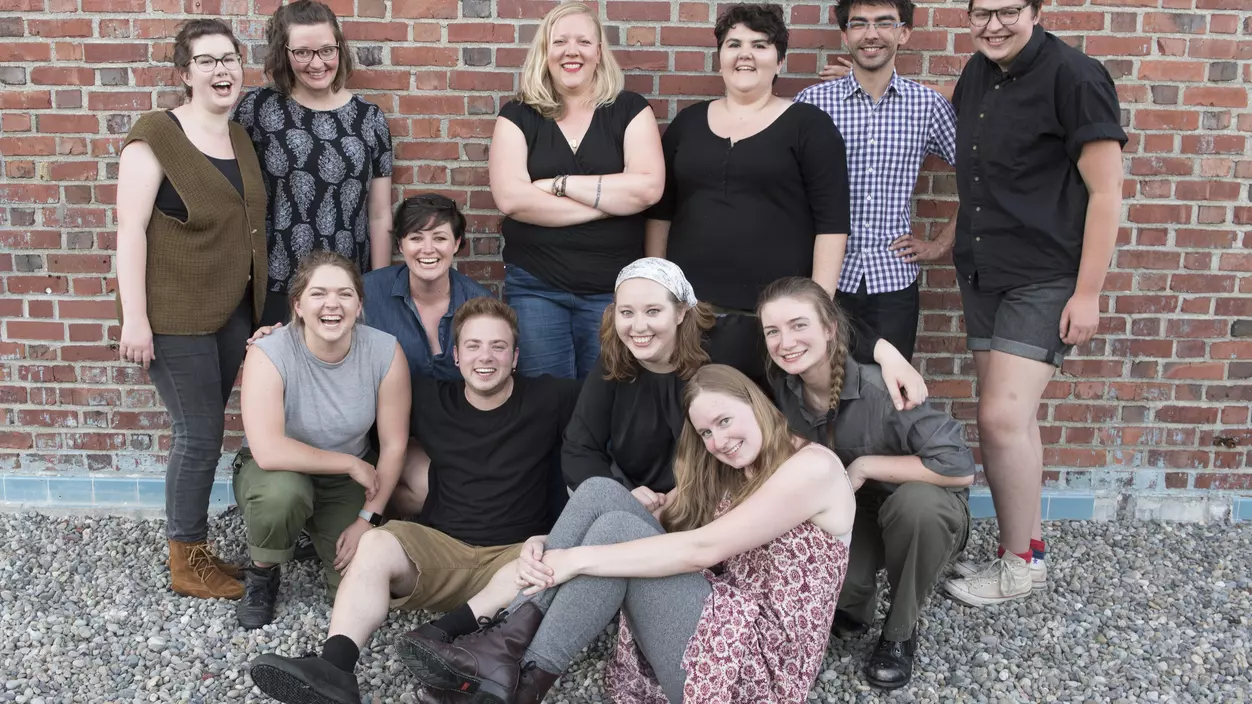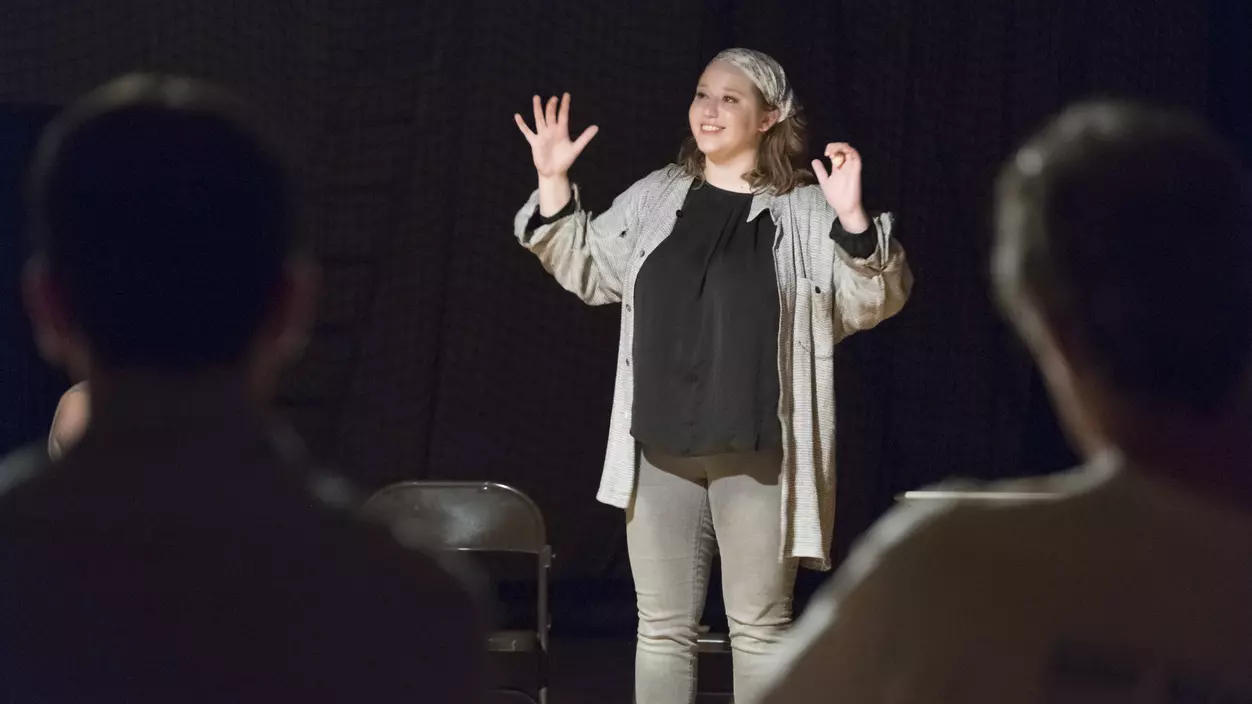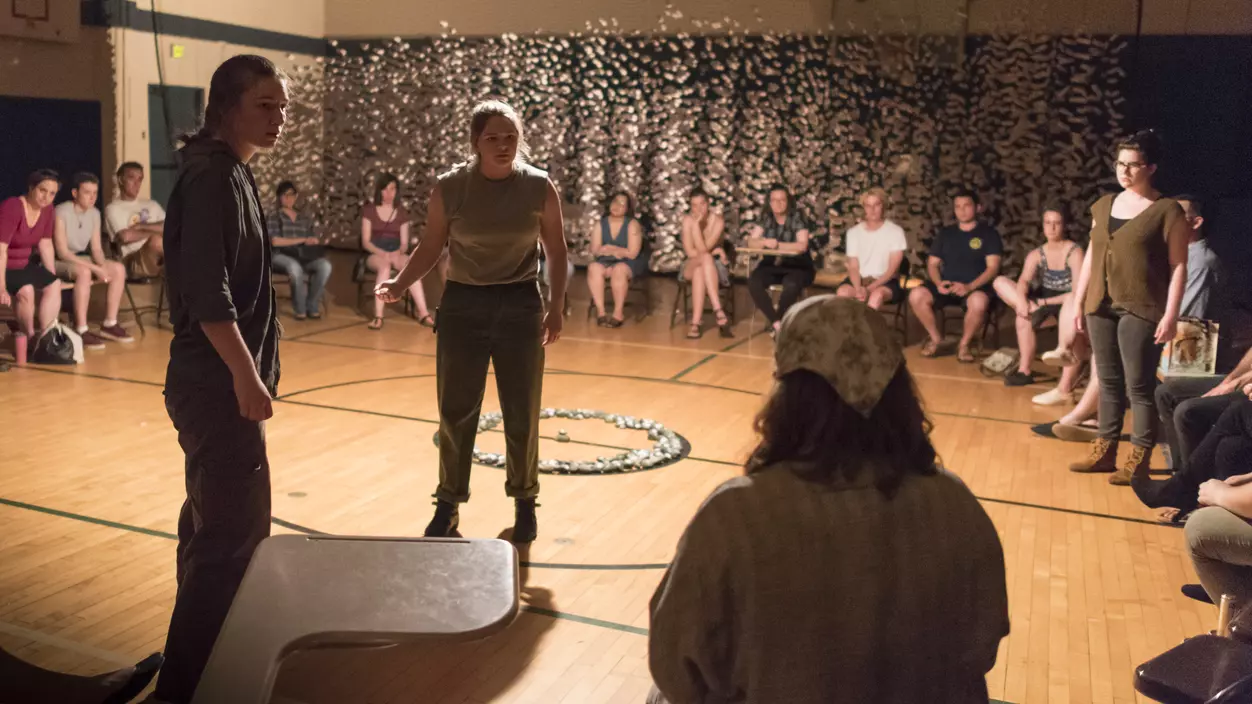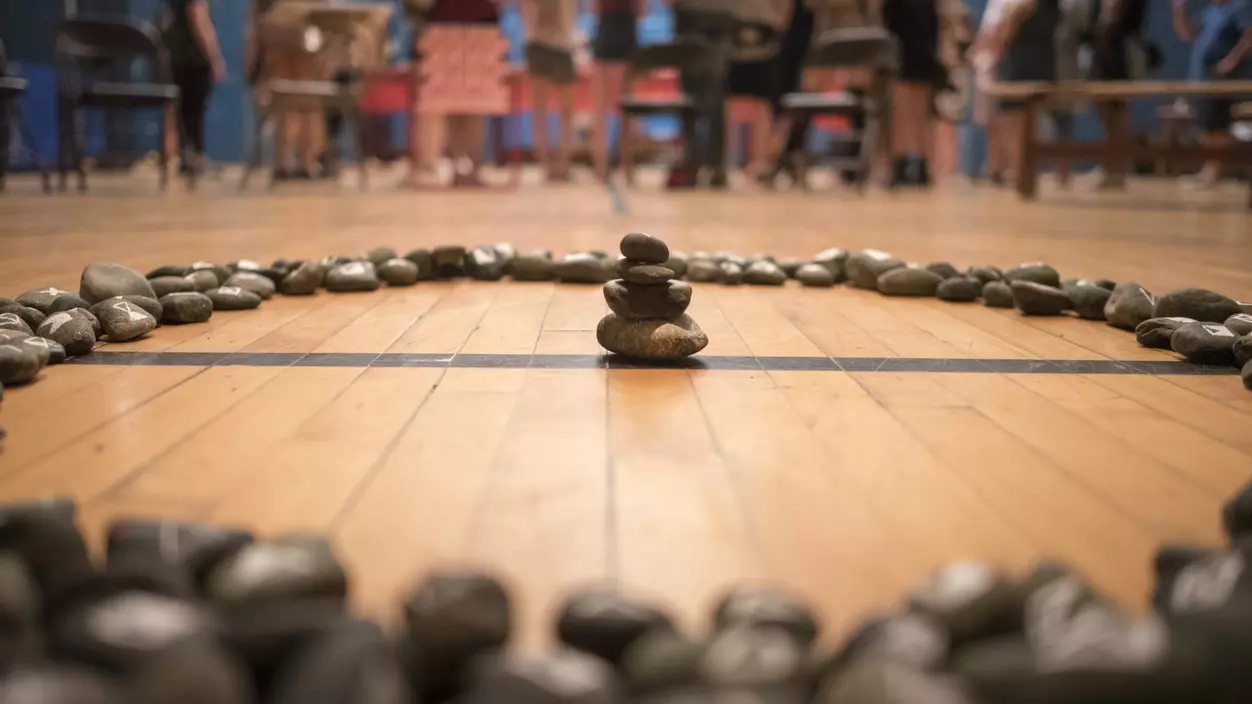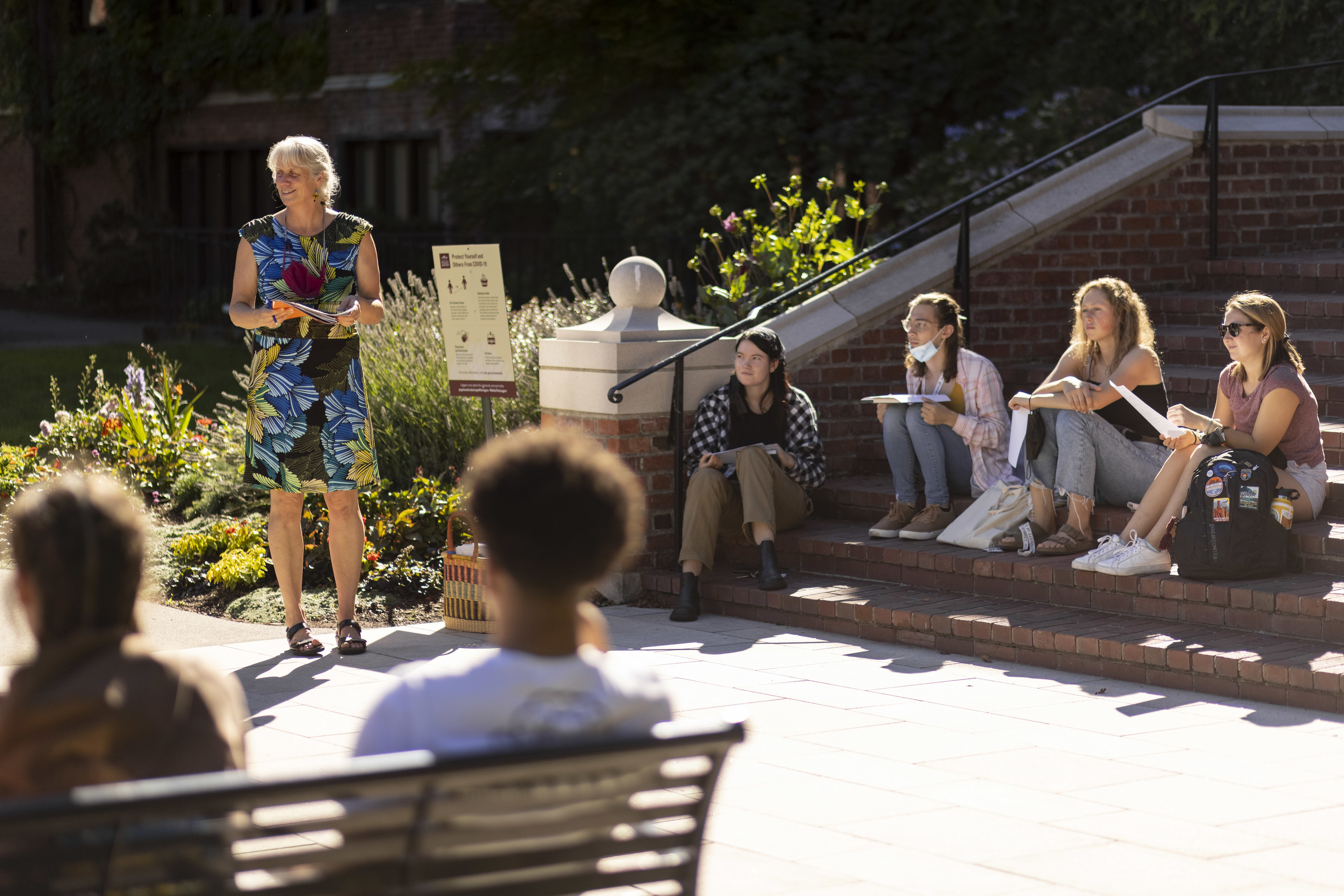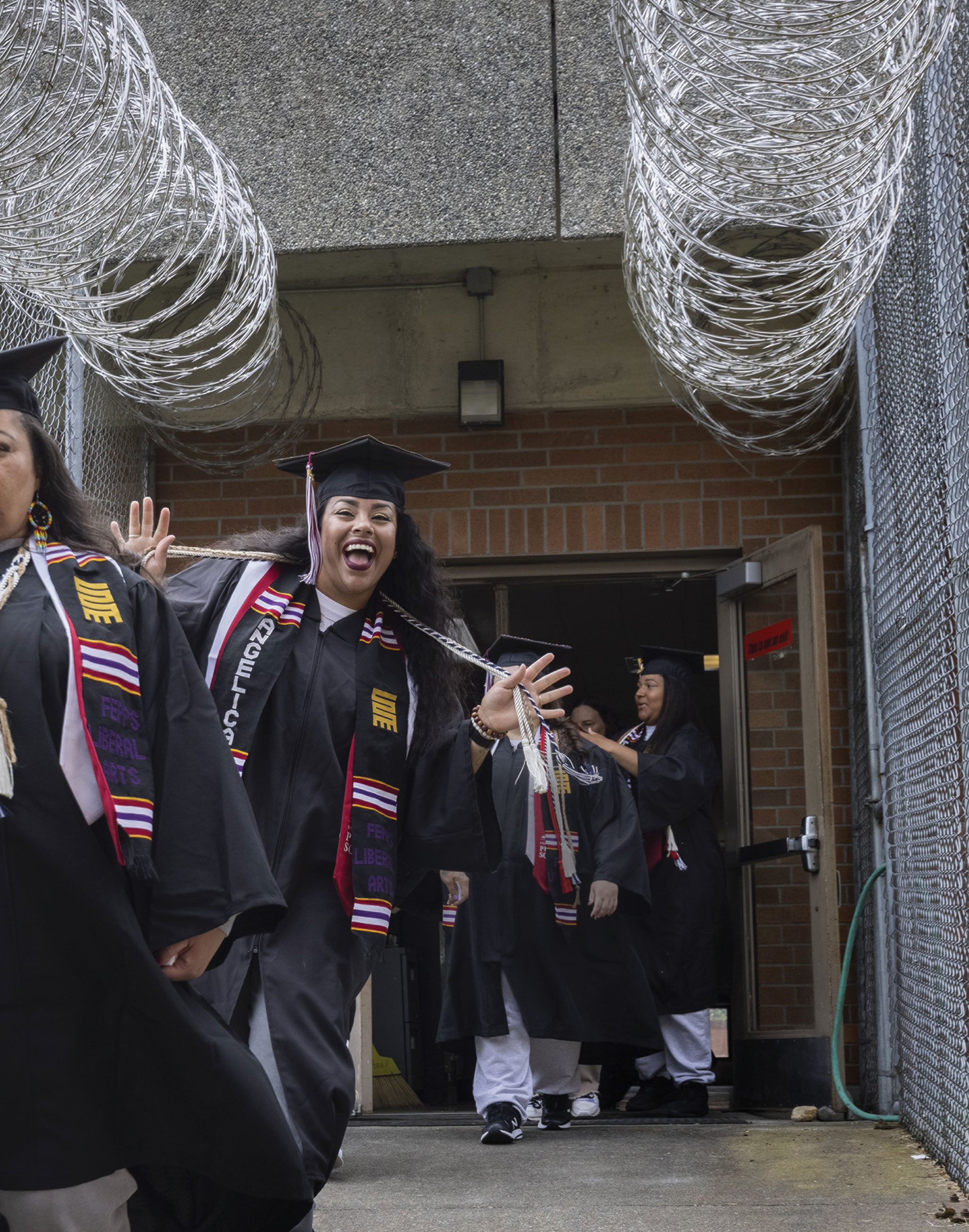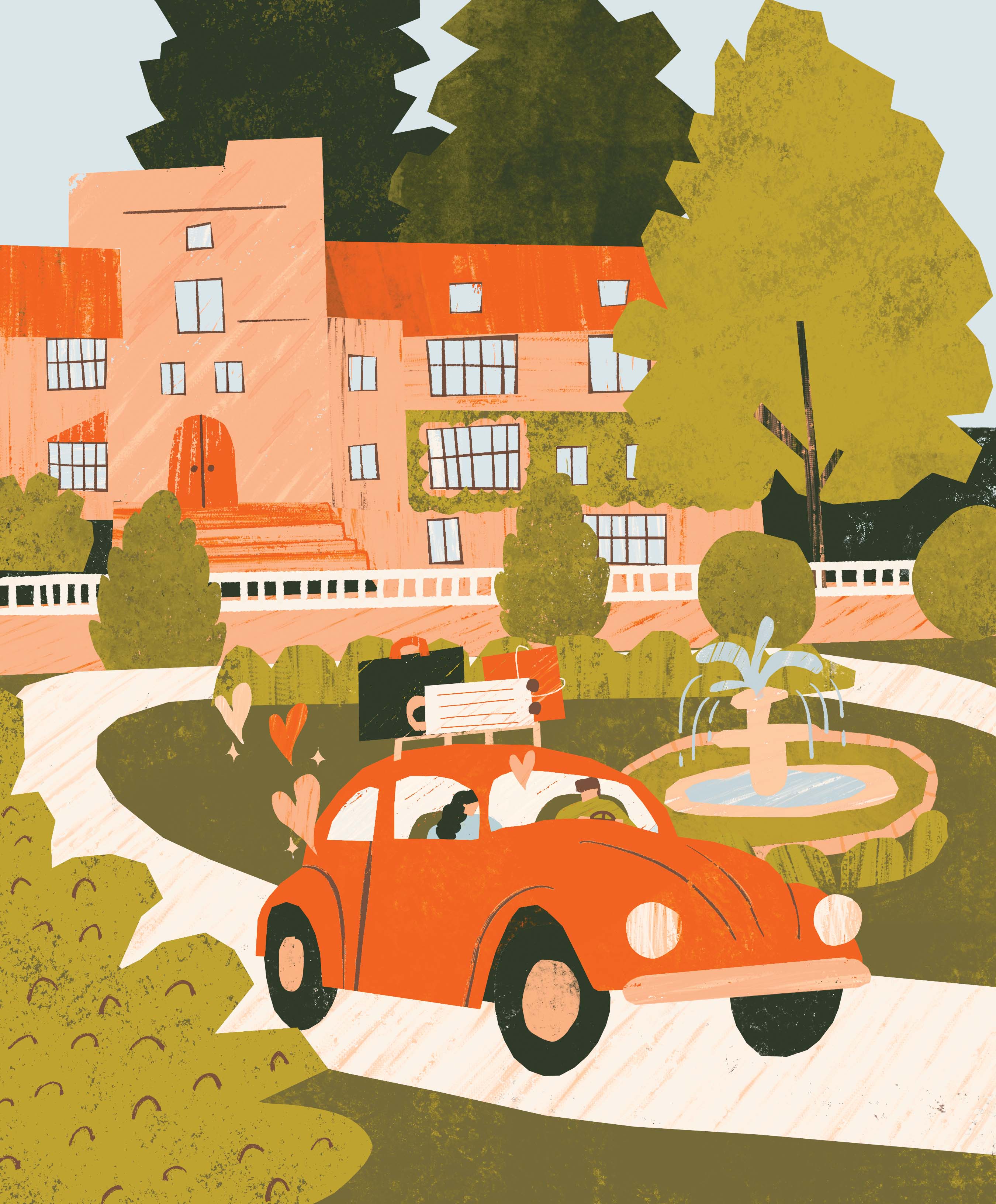In between creating ARTBARN and launching its first production, Jess was offered a job teaching theater at Puget Sound. She was thrilled by the idea of returning to her alma mater, but the timing was off—she had only just created her dream company in New York. It was a “torturous decision,” but she knew what she had to do. Two weeks after the Byrdcliffe residency ended, she packed up and moved back to the Pacific Northwest, hoping she could continue to lead the company from the opposite coast.
Four years later ARTBARN is thriving, and Jess has been able to use the company’s collaborative model as a teaching tool for her students. Melissa, who is head writer in addition to co-artistic director, flew in for the summer residency. “Having this particular team of interns was phenomenal,” she says. “And it was great to see Jess in teacher mode.”
The workshop production had been mounted at Warner Gym, which wasn’t an ideal space, acoustically speaking, and certainly wasn’t specific to the story of women holed up in a bunker. Now that the workshop process is over, Jess is focused on developing the piece further at Fort Worden Historical State Park, and estimates that the final production is still two years away. “I felt a different pressure this year than I have ever felt with ARTBARN, I think partially because we are a company of women, and we finally chose to do a piece about women,” she says. “I’d like to give ourselves the time to do it well.”
Fort Worden is located on the Kitsap Peninsula, overlooking the Puget Sound, 88 miles north of Tacoma. The grounds include a long, rocky beach with a lighthouse, dense woods dotted with concrete bunkers, and big military houses. Part of what appeals to Jess about the space is how “masculine” it feels. “Everything about it is such brutal architecture,” she says. “It feels like it wants contrast, to be reclaimed with a different kind of power.”
Ultimately, she hopes to curate an arts festival there, where ARTBARN would be just one part of the whole experience. “I would be really thrilled to create a platform for a lot of different artists to collaborate across disciplines in response to a similar site or a shared theme,” she says. Her eyes light up then, and for a moment she gazes out her office window, presumably envisioning the creative work ahead.

